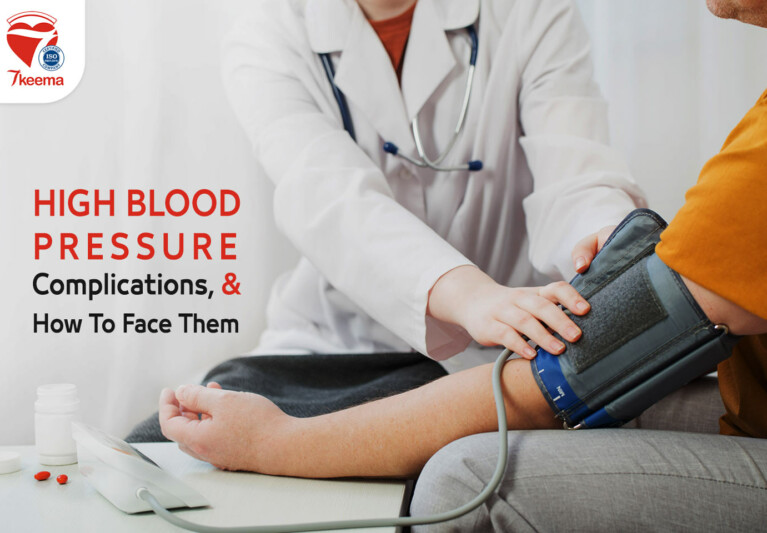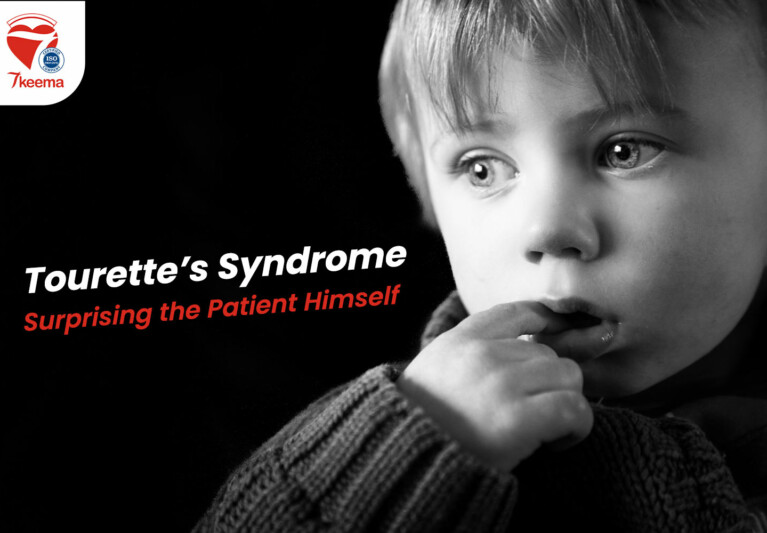As we age, the risk of facing back, arm, and leg pain increase. Then we ask about the reasons and drown in our thoughts. That’s why we decided to write more about herniated discs, their causes, types, and treatment.

What is the herniated disc?
Let’s explain it simply, inside our bodies. Bone joints are separated by a piece of gelatin texture and an outer fiber ring that provides the necessary plates to strengthen. That gelatin material is called cartilage. For example, the spine has 23 cartilage tablets between the vertebrae.
This disk, or what we call cartilage, is designed for the protection against minor shocks between individual Vertebrae by insulating the object by intercepting vibrations and reducing the effects on vertebrae for easier movement and less injury. As well as for natural movement without feeling any kind of pain or roughness. As we get old or due to repeated incorrect movements, pressure on Vertebrae increases more, which decreases the flexibility of the cartilage inside the joint and creates small cracks on the outer ring of the fibers.
As a result of these stresses, cartilage is discharged from its position between joints, causing fatigue and back, arms, legs, or joint pain. This also falls under the category “reasons for the herniated disc.”
To make it clear, the herniated disc is the appearance of cartilage pills between the spine and joints. When these pills emerge, they exert pressure on the roots of nerves that branch out of the spinal cord, producing neuromuscular symptoms.

Causes of a herniated disc:
As a result of what’s been said before, we can say that herniated disc has several causes, the most important of which are overload, or incorrect movements that damage cartilage and joints, and the most important things to mention about this:
-heavy lifting.
– Aging is common for the herniated disc.
-Over-weight is one of the things that causes herniated disc.
-Muscle weakness due to genetic or acquired causes, often neck or back muscles.
-Weakness of the hard fiber wall.
-Gel-like nucleus bulge is a major cause of herniated disc.
-A shredded disk or herniated disc tears the gel-like nucleus.
-Genetic factors are sometimes included in the herniated disc.
-Smoking.
-repeated wrong movements.
– Some teens and young people who engage in certain physical activities or sports, including physical fitness or weight-bearing exercises, and those involving muscle tension, are more likely to develop slips such as football, the most common form of back pain.
After we have learned about some of the causes of the herniated disc, we can summarize as follows:
-heavy stuff.
–Aging.
-Overweight

Who is the most likely to face herniated disc?
After bringing all the herniated disc causes to your table, we would like to inform you who’s most likely to face it. Let’s start with:
-Men between 25 to 50 are more likely to face herniated discs due to carrying more heavy stuff than women. If the weights are erroneously carried using the back muscles instead of the legs, the fiber ring and cartilage are more susceptible to break.
– Young people between the ages of 25 and 30 years old, if their spinal disk degeneration or if they have a disk rupture, they may cause their cartilage to leave its place and put pressure on their nerve, which extends down the leg, causing tendencies and extremities weakness.
-people who carry heavy stuff.
-People who drive for extended or continuous periods daily.
-People who are not exercising due to muscle weakness and loss of strength.
-smokers, there are some signs that smoking reduces the flow of oxygen to cartilage.

Herniated Disc Symptoms:
We can mention some symptoms, so you know you’re suffering from a herniated disc. There are common symptoms and others that cannot be related only to slippage:
1)Numbness:
One of the most common herniated disc symptoms among people is a feeling of numbness because when cartilage starts to slide or move, it forces the nerve or one of the nerve roots to turn off the needed signal movement to the limbs. This causes numbness in the hand, foot, or head.
2)Pain:
We can say that pain is the most common herniated disc symptom among sufferers, and it’s a cartilage slider symptom that may begin simple and then gradually increase until it gets worse over time. And for the place of pain it’s in the particular sliding cartilage area and may extend to the nearest point of sliding cartilage in either arms or feet.
For example, you feel intense leg pain due to a lower back spinal slide, also called sciatica disease.
Between the thighs and the buttocks, you may feel the pain if the back slider is also lower, but if the cartilage is in the neck area, pain is common in the arms or shoulder.
We can summarize those symptoms to:
-Arms or shoulders pain from neck slipping symptoms.
-Legs, thighs, and buttocks pain from cartilage in the lower back area.
-Coughing pain is evidence of the spinal vertebrae pressure that you feel from the slightest movement.
-Pain while walking and movement.
-Back pain.

3)Muscles weakness:
One of the common cartilage symptoms is general muscle weakness because there is a defect in transmitting the necessary signals to the muscles, which causes weakness and slow response to body signals.
4) Hard Movement:
A sliding syndrome is a cause of lack of movement; whether it is an attempt to stand or to sit, the injured person may feel intense pain, especially when the person is trying to stand or settle down to a certain body position to avoid severe pain. This pain results from sliding cartilage pressure on the nerves in the surrounding area.
5)Pain while doing some movements:
For example, when you bend or move your body, cartilage compresses your nerves around it in a very small way, causing severe and sudden pain, which is a symptom of a herniated disc at the start of infection.
6) One side of the body gets cold:
Sometimes it’s fairly common in a cartilage-like slide syndrome due to the pressure of cartilage sliding on the nerve, which we can also describe as a slow feeling in the body, some kind of anesthesia, burn, or tendency that affects one end of the body but not the other.
7) Pain while or after sneezing:
A herniated disc’s symptoms are a pain in the abdomen, which can be in the back area.
8) bladder uncontrolled:
A slightly or rarely observed cartilage-sliding symptom may affect the bladder or cause urinary incontinence.

Herniated Disc Types:
The herniated disc has many types that may occur in the back, neck, or cotton vertebrates. Each type has its own causes and symptoms, which we list in our article:
1)lumbar herniated disc:
It’s the most common type among people suffering from it, and it’s an injury to the vertebrae of the cotton spine. One of the causes of slipping off the cotton cartilage is:
– Aging causes vertebrae to lose their protective fluid.
– Wrong movements.
– Some injuries.
– Lifting heavy weights.
– Overweight.
– muscle weakness.
lumbar herniated disc treatment:
-Making new daily habits such as back and muscle exercise is necessary for herniated disc treatment.
– Avoid lifting heavy objects for better-herniated disc treatment.
– Regular Exercising is needed for lumbar for herniated disc treatment.
– If you want herniated disc treatment, you have to take some medication after visiting the doctor.
– Sometimes, there is surgical medical intervention to treat in case the pain isn’t gone within six weeks or if the sliding cartilage adversely affects muscle function.

2) Cervical herniated disc:
It is the second most common type, the neck consists of 7 neck vertebrae, 5 of which are cartilage, and it gives rise to some symptoms such as:
-Numbness in the shoulder, arms, or fingertips.
– Arm or hand weakness.
– headache.
– Feeling stiffened and unable to move.
– Sneezing pain caused by neck movement.
– pain while standing and sitting.
There are sometimes more serious symptoms:
– Loss of control over things by hand.
– Balance problems.
– The effect on the legs and inability to walk.
-Causes of Cervical herniated disc:
-Increased load on the upper body.
-exposure to a blow or stroke in the neck area.
-sitting for long periods so that placing your neck down is like spending a lot of time on computers.
– Sudden or violent movements on arms or neck.
– Aging.
-Some genetic causes.
How to Treat Cervical Slippage:
– Stop doing activities that require much effort is a good point for herniated disc treatment.
– Using ice cubes at the point of injury assures muscle pain and numbness for better-herniated disc treatment.
– Physiotherapy and some simple exercises to soothe the neck pain caused by nerve pressure for herniated disc treatment.
– Sometimes, it’s medication. It’s through the doctor for effective herniated disc treatment.

3) Thoracic herniated:
The rarest type of all types and it occurs between the chest
Its symptoms:
-Back pain is so severe that it doesn’t improve with any drug, or chronic pain limits a patient’s daily activity to no longer be able to lead a normal life
– When a neurological, motor, or sensory injury or a walking injury is found in the neurological examination, especially if it is gradual.
-Urinary disorders.
There are three ways for herniated disc treatment without surgery:
– limit the activities that increase pain.
-Some painkillers.
-Anti-inflammatory and the use of bandages.
References:
https://www.nhs.uk/conditions/slipped-disc/
http://www.myhealth.gov.my/en/slipped-disc-spine/
https://www.healthline.com/health/herniated-disk#complications
https://orthoinfo.aaos.org/en/diseases–conditions/herniated-disk-in-the-lower-back




